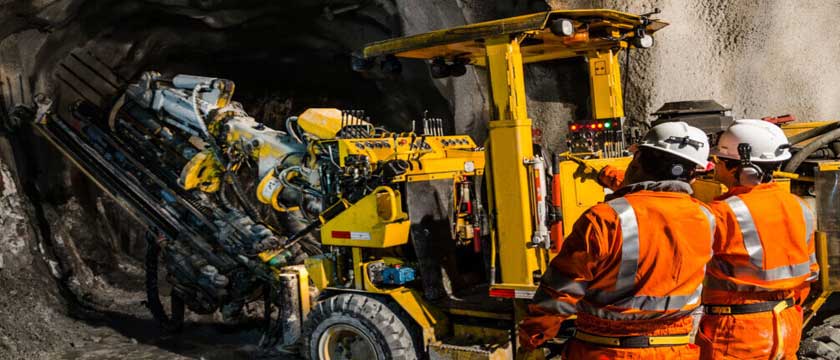Improving mine safety within your organization in India can be approached through a combination of advanced technology, comprehensive training, strict safety standards, and a strong safety culture. Here are some strategies that can help in enhancing mine safety:
1. Implement Advanced Technology
Use of Sensors and Monitoring Equipment: Deploy sensors for monitoring air quality, gas emissions, temperature, and other safety indicators in real-time. This technology can provide early warnings to prevent hazardous incidents.
Automated and Remote-Controlled Equipment: Invest in automated mining equipment and machinery that can be operated remotely, reducing the risk to human workers in dangerous areas.
Drones for Inspection: Utilize drones to inspect hard-to-reach areas, ensuring safety checks without putting workers in danger.
Wearable Safety Technology: Equip workers with wearable devices that monitor their health, track location, and send alerts in case of emergencies.
2. Comprehensive Training and Safety Awareness
Regular Safety Training: Conduct frequent safety training sessions for all employees, focusing on the latest safety protocols, emergency response, equipment handling, and hazard identification.
Simulation-Based Training: Use VR (Virtual Reality) and simulation-based training to provide practical experience without exposing workers to real-life risks.
Emergency Drills Organize regular emergency drills to prepare workers for handling unexpected situations like fires, gas leaks, or equipment failures.
3. Develop a Safety Management System
Safety and Health Management Systems (SHMS): Implement an SHMS that includes risk assessment, safety standards, regular audits, and performance tracking.
Standard Operating Procedures (SOPs): Develop clear SOPs for every task and ensure that they are strictly followed by all employees.
Regular Safety Audits: Conduct internal and external safety audits to identify gaps and areas for improvement.
4. Promote a Strong Safety Culture
Encourage Safety Leadership: Train supervisors and managers to lead by example and emphasize the importance of safety. Recognize and reward safety-conscious behavior among employees.
Safety Communication: Keep open channels of communication about safety concerns, suggestions, and feedback. Use notice boards, newsletters, or mobile apps to share safety information regularly.
Safety Meetings: Organize regular safety meetings and toolbox talks to review safety protocols, discuss recent incidents, and gather suggestions for improvement.
5. Introduce Risk Assessment and Hazard Identification
Conduct Risk Assessments: Regularly perform risk assessments to identify potential hazards and develop strategies to mitigate them. This includes evaluating equipment, environmental conditions, and processes.
Implement Risk Mitigation Measures: Based on risk assessments, introduce engineering controls, administrative controls, and personal protective equipment (PPE) to minimize risks.
Use of Safety Checklists: Employ safety checklists
before starting any mining activity to ensure all precautions are in place.6. Utilize Data Analytics for Safety Improvement
Data Collection and Analysis: Gather data on incidents, near-misses, equipment failures, and safety inspections to identify patterns and trends.
Predictive Analytics: Use data to predict potential hazards and implement preventive measures. This can help in addressing issues before they become accidents.
7. Implement Strict Safety Standards and Regulations
Compliance with Regulations: Ensure strict adherence to local, state, and national mining safety regulations. Stay updated on any changes in safety laws and standards.
Certifications and Accreditations: Obtain safety certifications like ISO 45001 (Occupational Health and Safety) to demonstrate a commitment to safety and maintain high standards.
Regular Inspections: Schedule routine inspections to check equipment, safety gear, ventilation systems, and overall working conditions.
8. Invest in Personal Protective Equipment (PPE)
Provide Quality PPE: Ensure that workers have access to high-quality PPE, including helmets, gloves, masks, safety goggles, and high-visibility clothing.
Proper Use and Maintenance: Train employees on the proper use and maintenance of PPE to ensure effectiveness and compliance.
9. Health and Well-Being Programs
Medical Facilities: Set up on-site medical facilities with trained medical personnel to handle emergencies and provide regular health check-ups.
Health Monitoring: Conduct periodic health monitoring for employees working in high-risk areas to detect any early signs of health issues.
Support Programs: Provide mental health support, counseling services, and wellness programs for workers to ensure their well-being.
10. Community and Environmental Safety
Engage Local Communities: Work with local communities to address their concerns about safety and environmental impact. Engage them in safety programs and awareness initiatives.
Sustainable Practices: Follow environmentally sustainable mining practices to minimize the ecological impact, reduce dust and pollution, and maintain safety in the surrounding areas.
11. Use Real-Time Communication and Alert Systems
Communication Devices: Provide miners with reliable communication devices to stay connected with supervisors and safety teams.
Emergency Alert Systems: Set up alarm systems that can quickly alert workers in case of emergencies like equipment malfunctions, rockfalls, or gas leaks.
12. Engage with Industry Associations and Expert Bodies
Collaboration with Industry Experts: Partner with safety experts, consultants, and industry bodies to stay updated on the latest safety innovations and trends.
Knowledge Sharing: Participate in conferences, workshops, and safety forums to learn from best practices in the industry.
By implementing these strategies, your organization can significantly improve mine safety, create a safer working environment, and contribute to the overall well-being of workers. This not only helps in reducing accidents and injuries but also enhances the reputation and reliability of the mining industry in India.

